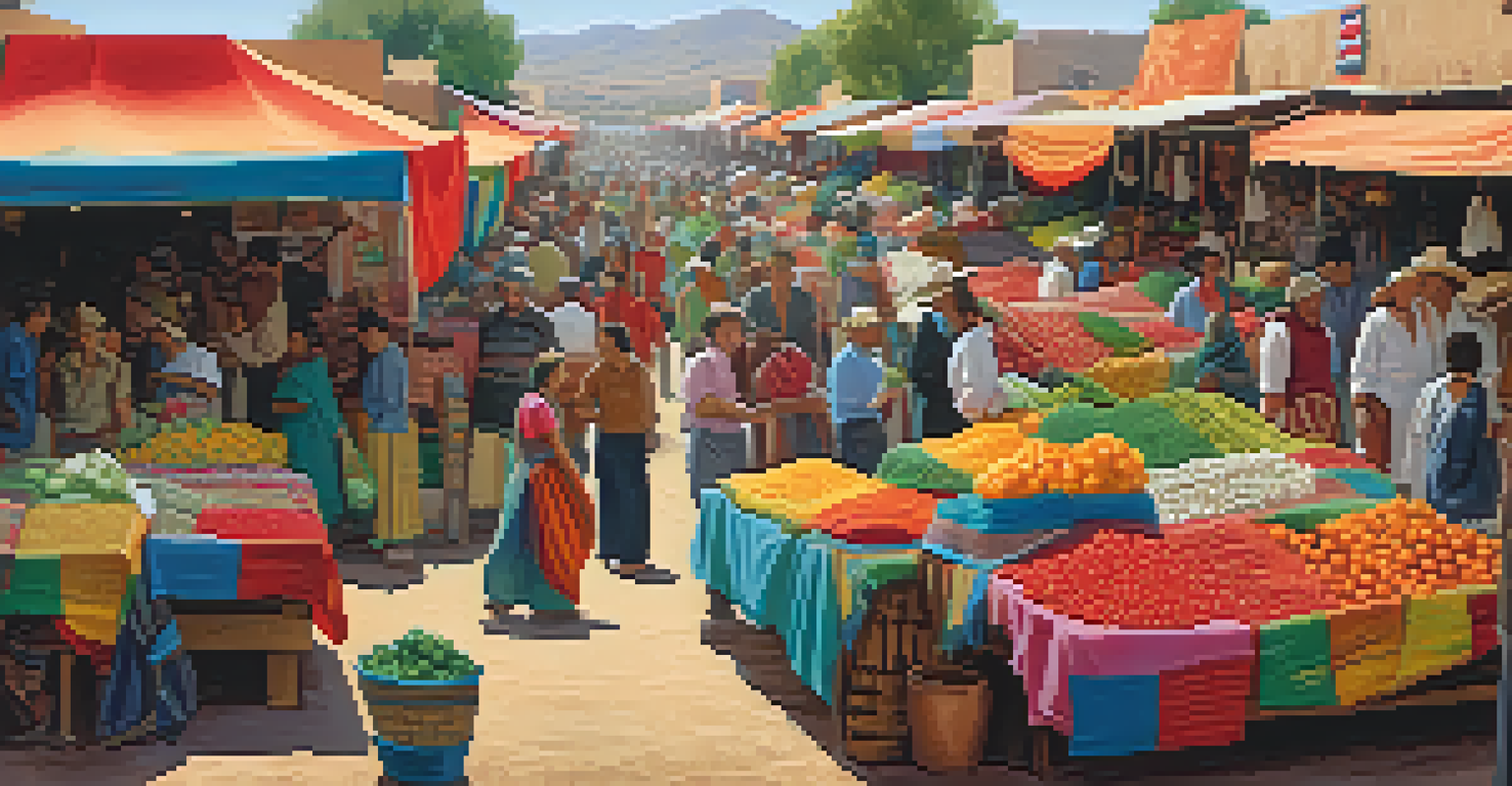Historical Overview of Arizona's Influence on U.S.-Mexico Ties

The Early Days: Indigenous and Colonial Influences
Before the U.S. and Mexico established formal ties, Arizona was home to diverse Indigenous cultures, such as the Apache and Navajo. Their interactions with early Spanish colonizers set the stage for a complex relationship that would evolve over centuries. The Spanish mission system aimed to convert Indigenous peoples while establishing settlements, creating a foundation for future cultural exchanges.
The past is never dead. It's not even past.
In the 1800s, the region's strategic importance grew, especially as the U.S. expanded its borders. The Treaty of Guadalupe Hidalgo in 1848, which ended the Mexican-American War, marked a significant turning point. Arizona was ceded to the United States, forever altering its demographic and cultural landscape.
These early interactions not only shaped the area's development but also established a framework for ongoing diplomatic and cultural ties between the U.S. and Mexico. Arizona's rich history of cross-cultural exchange serves as a testament to the interconnectedness of its communities.
The Mexican Revolution's Impact on Arizona
The Mexican Revolution (1910-1920) had profound effects on Arizona, as waves of Mexican refugees fled northward to escape violence. This influx significantly influenced Arizona's demographics, labor market, and cultural scene. Cities like Tucson and Phoenix became melting pots of Mexican and American cultures.

As these communities settled in Arizona, they contributed to the economy, particularly in agriculture and mining. Their presence highlighted the interconnectedness of the two nations, fostering a sense of shared identity. This period also saw the rise of cultural celebrations, such as Día de los Muertos, which blended Mexican traditions with American influences.
Cultural Exchange Shapes Identity
Arizona's rich tapestry of cultural exchange, influenced by Indigenous and Mexican traditions, fosters a shared identity among its communities.
The Mexican Revolution emphasized the importance of cross-border solidarity and the need for diplomatic relations. Arizona's evolving identity during this time laid the groundwork for future collaborations between the U.S. and Mexico.
Border Policies: Shaping Relations in the 20th Century
As the 20th century progressed, border policies in Arizona began to reflect broader national sentiments. The establishment of the U.S. Border Patrol in 1924 aimed to regulate immigration but often led to tensions between communities on both sides. These policies shaped not only the physical border but also the social fabric of Arizona's diverse population.
Cultural exchange is a two-way street. It enriches us and opens our minds to other perspectives.
The Bracero Program (1942-1964) allowed Mexican laborers to work temporarily in the U.S. to address labor shortages during World War II. This program brought thousands of workers to Arizona, further intertwining the economies and cultures of both nations. It also sparked discussions about labor rights and immigration policies that resonate today.
These evolving border policies underscore the complexities of U.S.-Mexico relations. Arizona's experiences during this period reveal how immigration dynamics can influence cultural and economic ties.
Cultural Exchange: Arts and Festivals
Arizona has long been a canvas for cultural exchange, showcasing the rich heritage of both its Indigenous and Mexican communities. Festivals like the Tucson Meet Yourself celebrate this diversity through food, music, and art. Such events not only promote local cultures but also strengthen bonds between neighboring nations.
The state's art scene reflects this fusion, with influences seen in traditional crafts, murals, and contemporary art. Artists often draw inspiration from their cultural roots, creating works that resonate with both Mexican and American audiences. This artistic dialogue highlights the shared history and ongoing collaboration between the two countries.
Economic Ties Drive Collaboration
The interconnected economies of Arizona and Mexico highlight the benefits of trade and commerce, creating jobs and stimulating growth on both sides of the border.
Through cultural exchanges, Arizona promotes understanding and appreciation among its residents and visitors. These interactions foster a sense of unity and pride, reinforcing the idea that cultural ties can transcend borders.
Economic Ties: Trade and Commerce
Arizona's economy is deeply intertwined with Mexico, particularly in trade and commerce. The state serves as a vital corridor for goods traveling between the U.S. and Mexico, with significant trade agreements enhancing these connections. The Maquiladora program, which allows factories to operate just across the border, has further amplified Arizona's economic ties.
In recent years, Arizona has become a hub for manufacturing and logistics, benefiting from its proximity to Mexico. This relationship has created jobs and stimulated local economies on both sides, showcasing the mutual benefits of collaboration. Events like the Arizona-Mexico Commission facilitate dialogue and strengthen these economic partnerships.
The economic ties between Arizona and Mexico highlight the importance of cross-border collaboration. As both regions continue to grow together, their shared prosperity underscores the potential of cooperative efforts.
Environmental Challenges and Cooperation
Arizona and Mexico share vital ecosystems, including the Sonoran Desert and the Colorado River, making environmental cooperation essential. Both regions face challenges such as water scarcity and climate change, necessitating collaborative solutions. Initiatives like the Binational Watershed Council focus on sustainable management of shared resources.
These environmental partnerships not only address pressing issues but also foster goodwill between the nations. Joint projects have included wildlife conservation efforts and habitat restoration, showcasing how collaboration can yield positive outcomes. Such efforts symbolize the interconnectedness of communities across borders.
Environmental Cooperation is Key
Joint efforts in environmental management between Arizona and Mexico address pressing challenges like water scarcity, showcasing the importance of cross-border collaboration.
By prioritizing environmental cooperation, Arizona and Mexico demonstrate that challenges can bring nations together. Their shared commitment to sustainability reflects a broader understanding of our collective responsibility to the planet.
Political Relations: Recent Developments
In recent years, political relations between Arizona and Mexico have evolved, reflecting broader national trends. Issues such as immigration reform, trade agreements, and border security have dominated the political landscape. Arizona politicians often engage with their Mexican counterparts to address these challenges collaboratively.
The establishment of the Arizona-Mexico Commission serves as a platform for dialogue and collaboration between the two regions. This organization promotes economic development, cultural exchange, and environmental sustainability, highlighting the importance of maintaining strong ties. Through these efforts, Arizona seeks to foster a more positive narrative around U.S.-Mexico relations.

As political dynamics shift, the relationship between Arizona and Mexico will continue to adapt. Ongoing dialogue and cooperation are essential for addressing shared challenges and promoting mutual understanding.